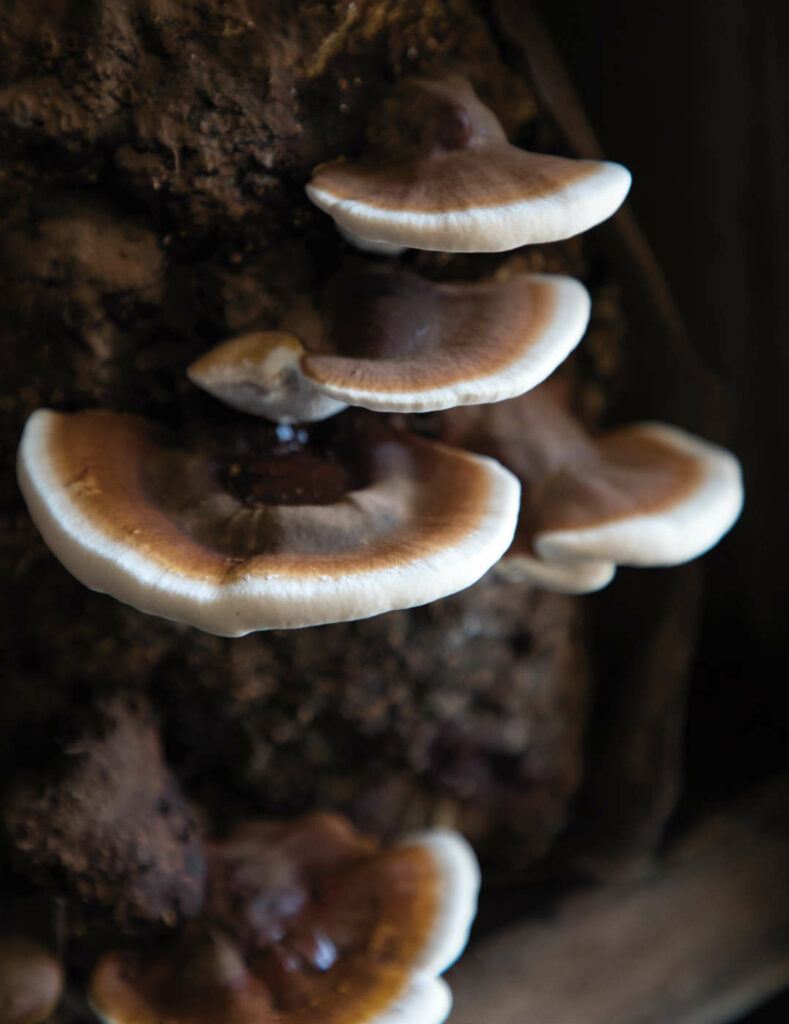
And we’re going higher
PHOTOGRAPHY BY MARK C. ANDERSON
The time is now.
That’s the most penetrating point Paul Stamets makes in the course of an hourplus interview about the power of beneficial mushrooms.
Which is saying something, because the planet’s pre-eminent minister of mycology covers a lot of ground, including one of his favorite literal refrains: “In a single cubic inch of soil, there can be more than 8 miles of mycelium cells… my foot is covering approximately 300 miles of mycelium.”
To wit, he hits on psilocybin’s vast promise: “The opportunity of people having access is huge; it’s time for us to be adults about this.”
He touches on the curative gains mushrooms continue to unlock: “Several hundred compounds are uniquely found in fungi. They are molecular wizards! They’re miniature pharmaceutical factories!”
He celebrates the sacred cooperation between human and bacterial cells: “We’re all assemblages of microbes cooperating as a ‘unit’ and…it’s really quite spiritual. The more science delves into the microbiome or the cosmos, the more we’re in this exquisite dance of complexity, this ebb and flow of forces.”
But more than anything, he emphasizes the weight of the current moment, and it’s not just because he’s touring on the topic of “Psilocybin Mushrooms, Bridging Cultures Across Continents: Creating the Paradigm Shift in Consciousness.” (He appeared at Golden State Theatre in Monterey on Nov. 14, after this went to press.)
Now represents a tipping point of sorts, wherein he feels humans have become familiar enough with the superpowers of fungi that they’re ready, open and willing to witness—and embrace—the true might of the mushroom kingdom.
In the teaser to his Golden State talk, Stamets and his team point out that “more than 161 universities and institutions have been approved for psilocybin clinical studies ranging from treating depression to Alzheimer’s to addiction,” and that the Food and Drug Administration designated psilocybin “a breakthrough therapy” years ago.
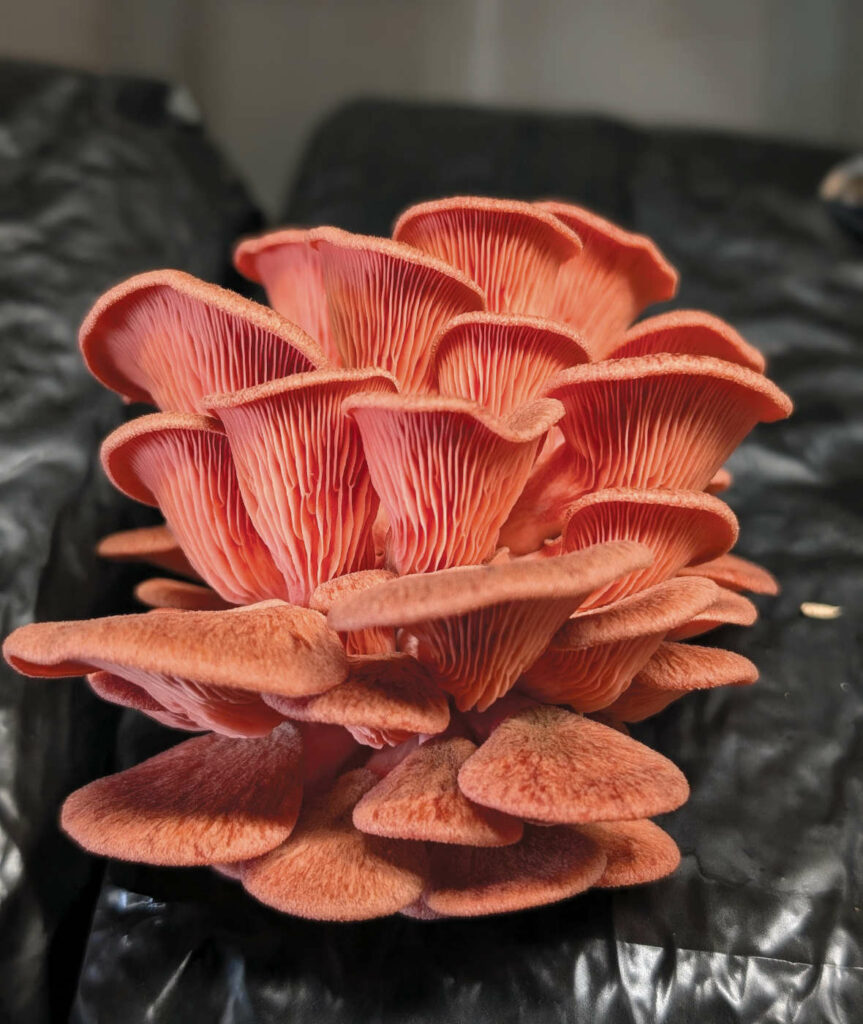
Meanwhile Oregon and Colorado have legalized psychedelics, and institutions like the new UC Berkeley Center for the Science of Psychedelics are dedicated to studying psilocybin’s impact on cognition, perception and emotion. Here at home, Santa Cruz was the third city in the country to decriminalize psychedelics for personal use and the Santa Cruz Psychedelic Society hosts regular activities like Psychedelic Peer Integrations, Microdosing Hikes and Psychedelic First Fridays.
“We’re at a precipice,” Stamets says. “It’s all hands on deck.”
He cites a peer-reviewed paper published in research journal Nature this July as additional evidence. In it, lead author Joshua Siegel and company find, “A single dose of psilocybin, a psychedelic that acutely causes distortions of space-time perception and ego dissolution, produces rapid and persistent therapeutic effects in human clinical trials.”
That all happens in concert with the wider rise of “functional,” “medicinal” or (in Stamets’ preferred parlance) “beneficial” mushrooms across the consumer landscape. There are microdoses available via mail order, vitality- and immunityboosting mushroom powder blends at the grocery store, chaga in your cappuccino with mushroom-based Laird Superfood creamer, even Nutra Thrive reishi supplements for your dog or cat too.
But while Stamets is all about capitalizing on current momentum, he does pause to remind listeners this is nothing novel.
“This is a great reawakening,” he says. “We are now rediscovering what our ancestors long ago knew.”
“When it comes to the power of the fungi family, we’re only starting to touch on the benefits.”
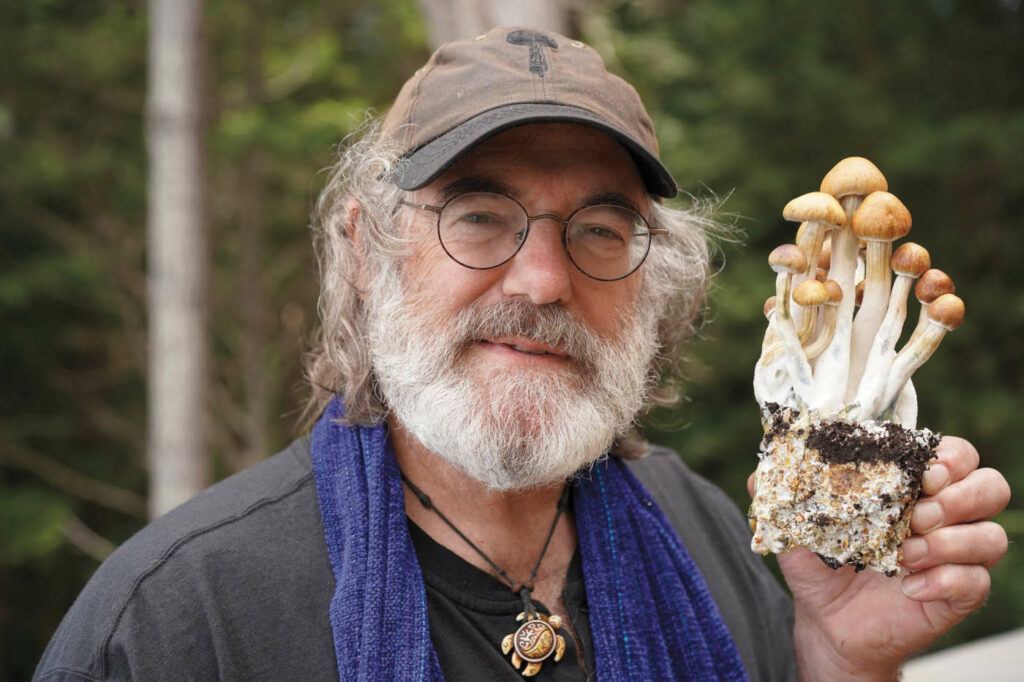
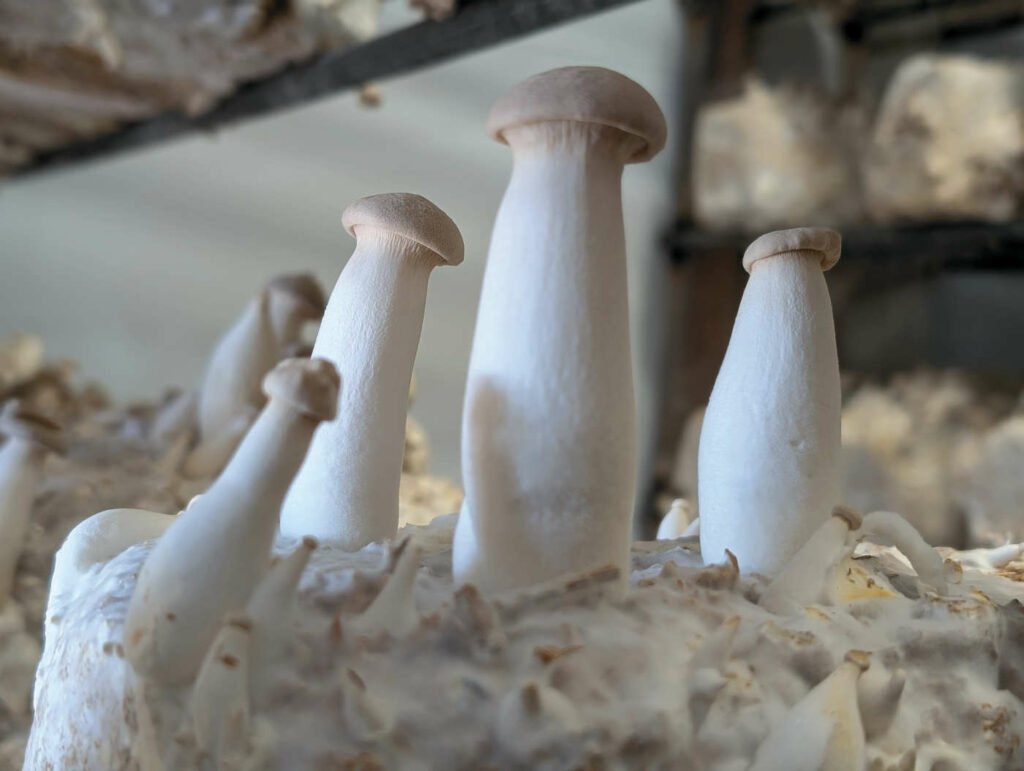
MOSS LANDING GROWN
The Garrone family has been in the mushroom growing business long enough that owners John and Toby knew Stamets well before he became a bestselling author, touring speaker or deployer of 20-plus myceliumbased patents for natural pesticides, filtration systems and antiviral compounds.
“Back then they were nerds, the geeks of the crowd,” laughs Ian Garrone, John and Toby’s son and CEO of Far West Fungi. “[They] were oddballs, and mushroom were only a little cool. There definitely was a mushroom following, especially in the Bay Area, which is where my parents started selling at farmers markets, out of their van, as one of the first organic growers.”
They’ve also been doing it long enough that they’re now on the third generation of family helping grow Far West Fungi’s reach—grandkids help run farmers markets stalls and are among 14 family members on staff—and long enough that they can remember when the only fungi they could move were white mushrooms.
“And that was it,” John Garrone says. He mentions this while navigating 60,000 square feet of growing space of Far West’s 8-acre Moss Landing facility, striding past row after loaded row of white, yellow and glowing pink oyster mushrooms, sturdy shiitake mushrooms, fuzzy lion’s mane mushrooms, bulbous shiitake mushrooms and woody reishi mushrooms.
The family operation has flourished to the point the sawdust for grow-blocks comes on a semi-truck at least 100 feet long. They appear at 18 different Monterey and San Francisco Bay Area farmers markets every week and their goodies—or better yet, the inventory at their downtown Santa Cruz store or Ferry Building space—unlock a universe of possibilities.
There are hyper fresh mushrooms—including king trumpets, maitakes, morels, baby shiitakes, shimejis, cordyceps—available at a fraction of what they cost at Whole Foods, and tall jars of dried chanterelles, candy caps and lobster mushrooms too.
Depending on which store you’re visiting, that’s only the beginning—there are spawn plugs, liquid culture syringes, take home minimushroom farms, imported porcini bullion, mushroom zest, vintage mushroom tea towels, t-shirts, mugs, reishi earrings and a mini bookstore with tomes like Fantastic Fungi Community Cookbook, The Mushroom Hunter’s Kitchen and Stamets’ own Mycelium Running.
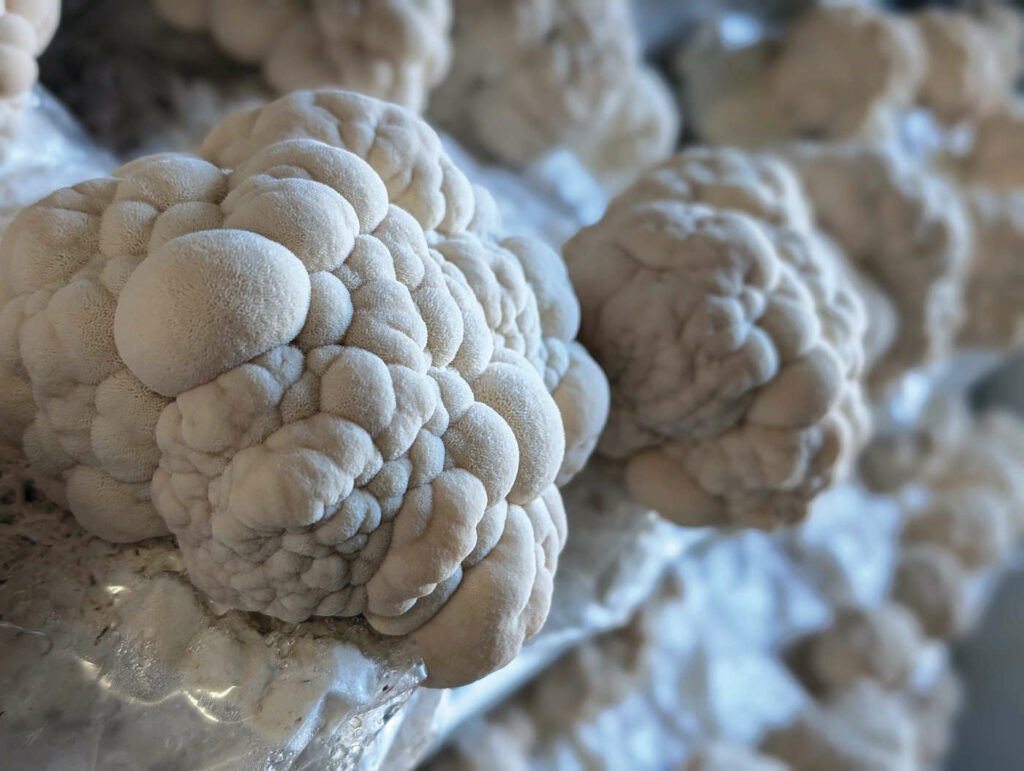

We have a very interesting and eclectic inventory,” says Santa Cruz FWF sales associate Sam Pine.
In Santa Cruz, you can even grab prepared dishes like tree oyster-king trumpetcrimini empanadas or the olfactory tractor beam of a truffle grilled cheese, featuring four types of mushrooms, Monterey Jack, pesto and tomato jam.
But a sizable non-culinary category now joins the stockpile. After selling its healthboosting mushrooms for years, only recently has Far West Fungi added tinctures to its offerings, to be taken orally, like shiitake, reishi, cordyceps, lion’s mane, maitake, turkey tail, chaga and a blended medley.
The corresponding gummies arrived this year, in a rainbow of colors: orange (guava-turkey tail), green (lime-lion’s mane), purple (huckleberry-reishi) and pink (a mix of all three, and Ian’s go-to).
“We originally went a different direction than Paul—he saw the writing on the wall, and had more faith, while we gathered our cues from customers, and kept learning,” Ian says. “When we heard customers’ doctors were recommending reishi, or turkey tail, or lion’s mane, we thought, ‘If they’re in need, we’re producing.’ Now we’re all back in on medicinal.”
Ferry Building assistant manager TJ de Laveaga ticks off some noted benefits of favorites like turkey tail (which uplifts the immune system) and lion’s mane (“It looks like a brain, and it’s good for your brain,” he says).
“A lot of people swear by our medicinal offerings,” he adds.
Hitting new peaks for both function and flavor, while impressive, isn’t the most dramatic evidence that Far West’s time is also now, beyond the fact this Thanksgiving season represented its most prolific cultivated mushroom sales spike yet. This year FWF introduced two major productions to help spread the mycelium gospel.
The first-ever Santa Cruz Mountain Mushroom Festival popped with presentations, cooking demonstrations and tastings, foraging walks and curated art exhibits over two days last May.
The inaugural Ferry Building Mushroom Festival followed in October with four days of programming including a Mushroom Masquerade and talks from the likes of Maria Finn, who published her own love note to mushrooms earlier this year, Forage. Gather. Feast.: 100+ Recipes from West Coast Forests, Shores, and Urban Spaces.
“Bringing together all these little pockets of mycologists—maybe they’re into wild foraging, or cultivating, or functional, or art, or psychedelics, or building materials and clothing micro textures, or the culinary side,” Ian Garrone says. “We’re starting to form one bigger industry where everyone has their stake, and we’re all raising the bar.”
Chris Hobbs, a clinician, botanist, mycologist, research scientist, fourth generation herbalist and author behind Medicinal Mushrooms: The Essential Guide, appeared at both festivals.
The subtitle of Medicinal Mushrooms sets the parameters appropriately broad for what the humble spores can accomplish: “Boost Immunity, Improve Memory, Fight Cancer, Stop Infection, and Expand Your Consciousness.”
The fact that they taste great makes for a happy, and perhaps spiritual, convergence, as he writes in a post on his website about “Mushroom Medicine”: “Is it serendipity that mushrooms that are edible and nutritious contain compounds that stimulate the immune system?”
MUSHROOMS IN THE KITCHEN
Westside Santa Cruz resident, South London native and Far West Fungi fan Paula Grainger has been practicing medical herbalism (after earning a degree in it at prestigious University of Westminster), crafting personalized wellness plans for clients, teaching classes like Garden Apothecary and blogging as The English Herbalist for decades.
“Connecting people and plants brings me so much joy,” she says.
Her mushroom moment also happens right now. As this issue hit newsstands, she’s debuting a cookbook called Nature’s Apothecary: Harness the Healing Power of Herbs, Mushrooms and Other Adaptogens, which inspires her to file two disclaimers. One, mushrooms aren’t plants, but they still bring her great joy, and she shares it with recipes for a cordyceps espresso martini, astragalus-reishi immuneboosting chicken broth, barbecued oyster mushrooms, and lion’s mane chowder (See recipe below)
“They’re closer to animals in the way they function,” she says, noting mushrooms placed in sunlight will manufacture vitamin D, like humans. “They’re just fascinating beings.”
Mushrooms are expanding from the produce aisles to the wellness sections of area markets.
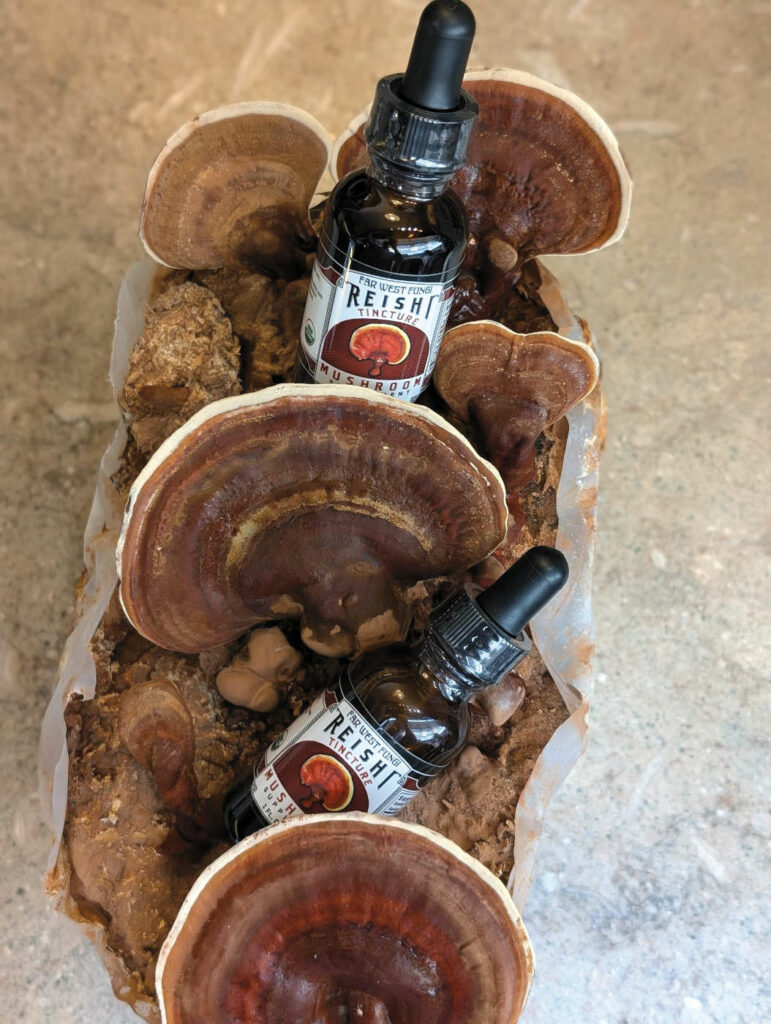
Two, while she’s very familiar with lifechanging qualities of, say, reishi—“It is called ‘the plant of immortality’ in China”—she stops short of assigning them omnipotence.
“Nothing is a cure-all that works every time,” she says. “But for most people, most of the time, there’s certainly a mushroom they can start taking that would be helpful. I’m not in the business of setting unrealistic expectations, but I see the extraordinary difference mushrooms can make.”
That care in messaging comes through in Nature’s Apothecary, a 176-page guide that builds upon a previous book Adaptogens, with a strong focus on mycological intel.
“It’s really helpful to get good up-to-date information about medicinal mushrooms out there, because I think there’s more and more awareness of the benefits, but still a lot of confusion about what is best,” she says. “Fortunately with much greater public awareness comes research, which is adding scientific validation, and allows me to back up what I’m doing with solid science.”
Her recipes pair with straightforward insight that empowers as much as it illuminates, with clear and handy subsections for each mushroom, titled “Who is it for?” “How to take it,” “Need to know” and “Good to know.”
“Accessibility and ease for people to navigate were important to me,” she says. “That’s partly because it’s something people will dip into, so I organized it to allow for that.” She does hasten to add, though, that while beneficial mushrooms are enjoying unprecedented visibility, she believes the upswing has only begun.
“When it comes to the power of the fungi family, we’re only starting to touch on the benefits,” she says. “There is so much to learn.”
That refrain resonates with each of the protagonists in this piece. Ian Garrone notes Far West has started working on testing new tinctures and extracts with Christopher Hobbs to better harmonize Western science with Eastern wisdom.
“We’re working on some headier stuff, and for me Hobbs is on the forefront,” Garrone says. “This is great stuff. Let’s start promoting it, get the best strains available and get as much information about it as we can because, unfortunately, there’s still not a lot of information. But it’s getting better as we’re seeing this huge interest and boom. It’s a fascinating time.”
While Stamets remains vigilant around mycelium’s healing promise for people, he sees profound opportunity beyond mankind.
“We have a very human-centric point of view, asking ‘What can mushrooms do for me?’” he says. “We don’t ask, ‘What can mushrooms do for nature?’ They can help ecosystems, biodiversity and sustainability, against ever-changing forces like fires, construction and climate change.”
Implicit in his challenge is the reminder that, when it comes to maximizing mushroom magic, there’s no time like the present.
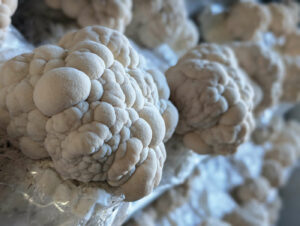
About the author
Mark C. Anderson, Edible Monterey Bay's managing editor, appears on "Friday Found Treasures" via KRML 94.7 every week, a little after 12pm noon. Reach him via mark@ediblemontereybay.com.
- Mark C. Andersonhttps://www.ediblemontereybay.com/author/markcanderson/
- Mark C. Andersonhttps://www.ediblemontereybay.com/author/markcanderson/
- Mark C. Andersonhttps://www.ediblemontereybay.com/author/markcanderson/
- Mark C. Andersonhttps://www.ediblemontereybay.com/author/markcanderson/



